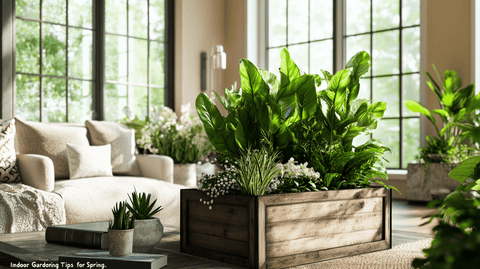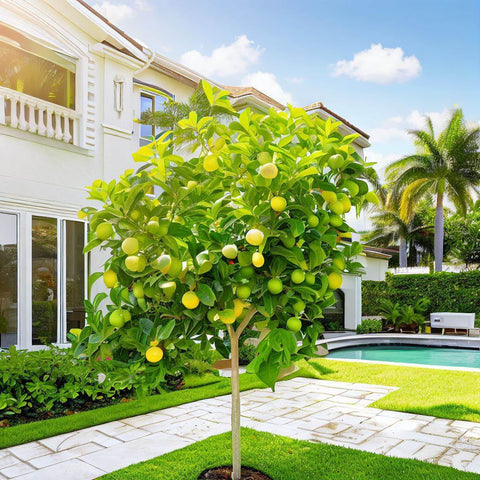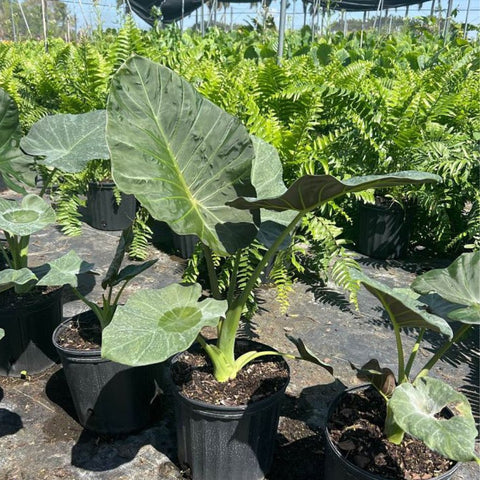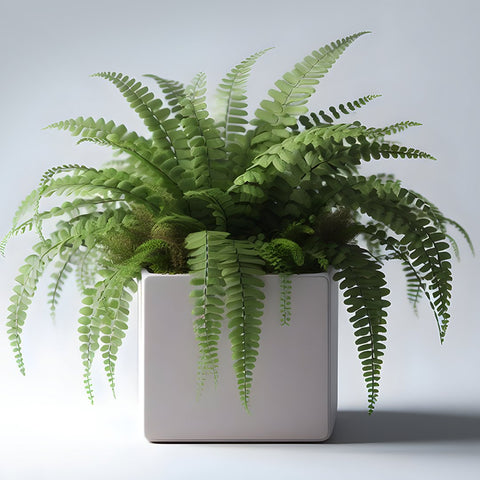Introduction
As the chill of winter fades and the vibrant energy of spring begins to bloom, it’s the perfect time to refresh your indoor space with a touch of nature. Indoor gardening not only transforms your living area into a lush, green oasis but also brings countless benefits, from purifying the air to enhancing your mood. At Plantology, we believe that gardening is more than just a hobby; it's a way to cultivate joy and well-being in your everyday life.
This guide will walk you through the essentials of indoor gardening for spring, offering tips and tricks to help your plants thrive. From selecting the perfect plant varieties and optimizing your growing conditions to maintaining a healthy indoor garden, we’ve got you covered. Let’s explore how you can turn your home into a sanctuary of greenery this spring season.

Preparing for Spring Gardening Indoors
A. Assessing Your Space
Before selecting any plants, it's crucial to understand the environment you’ll be inviting them into. Assessing your space involves evaluating available light and identifying areas most suitable for plant growth.
Evaluating Available Light and Space
An essential factor for indoor gardening success is light. Start by observing the natural light in your home at different times of the day. South-facing windows receive the most light, making them ideal for sun-loving plants, while north-facing windows are better suited for shade-tolerant varieties. Don’t let the lack of sunlight deter you; there are plenty of plants that thrive in low-light conditions.
Identifying Suitable Areas for Plant Growth
Once you’ve determined the light condition, decide where to place your plants. Consider shelves, window sills, and even hanging baskets to create a dynamic and layered plant display. Ensure there’s enough space for air circulation to prevent mold and pests.
B. Refreshing Your Tools and Supplies
Now that you’ve assessed your space, it’s time to prepare your tools and supplies. A little spring cleaning of your gardening gear can make a huge difference.
Cleaning and Organizing Gardening Tools
Ahead of the growing season, disinfect and sharpen your tools to ensure they’re in prime condition for trimming and repotting. Organize your supplies, from pots to potting mix, ensuring you have everything necessary for a successful gardening season.

Updating Soil and Fertilizers
Spring is the perfect time to replenish soil nutrients. Depleted soil can hinder the growth of your plants, so opt for a high-quality potting mix. Regular feeding with a balanced fertilizer will also provide the nutrition needed for robust growth.
Choosing the Right Plants for Your Indoor Garden
A. Understanding Plant Types and Needs
Knowing the specific needs of various plants will guide you in choosing the right varieties for your home environment. Different plants require distinct light, water, and humidity levels.
Low-Light Plants
If your home has limited natural light, consider incorporating Aglaonema Silver Bay into your space. These stunning plants thrive in low light and are incredibly hardy, making them perfect for novice gardeners.
Sun-Loving Varieties
For sun-soaked spaces, succulents and palms are excellent choices. The Agave Blue enjoys bright, sunny spots and offers low maintenance, while the elegance of the Adonidia Palm Single can elevate any sunlit interior.
B. Choosing Plants Based on Space Limitations
Whether you live in a compact apartment or a sprawling home, there are plants perfectly suited to your needs. Consider the following sizes and varieties:
Small Spaces
In tighter spaces, opt for small but impactful plants. Cacti or mini succulents can add character without overtaking your area. Hanging plants, like the trailing pothos, save floor space while creating visual interest.

Large Areas
Larger rooms can comfortably house more substantial plants, such as the Alexander Palm, adding dramatic flair and lush greenery to your home.
Caring for Your Indoor Garden in Spring
A. Watering Techniques and Tips
Watering is one of the most common challenges experienced by indoor gardeners. Over-watering can lead to root rot, while under-watering may cause plants to wilt.
Checking Soil Moisture Levels
To determine the right watering schedule, check your plants' soil moisture. Insert your finger about an inch into the soil; if it feels dry, it’s time to water. Different plants require varied watering frequencies, so understanding your specific plant's needs is essential.
Using the Right Watering Tools
Invest in a watering can with a narrow spout for precise watering, especially with smaller pots. For hanging plants or those in hard-to-reach spots, consider a long-necked watering can or self-watering pots.
B. Fertilizing and Feeding Your Indoor Plants
Feeding your plants right helps them flourish. During the active growing season in spring, plants benefit from extra nutrients.
Types of Fertilizers
Liquid fertilizers are easy to use but need frequent application compared to slow-release fertilizers that provide steady nutrition over time. Ensure to follow the manufacturer’s instructions concerning quantity and application frequency.

Organic vs. Synthetic Fertilizers
Opt for organic fertilizers to maintain an eco-friendly gardening practice. They're less likely to cause chemical build-up in the soil, which can harm delicate root systems.
C. Pruning and Grooming for Healthy Growth
Spring is a perfect time to groom your plants, promoting healthy growth and maintaining their appearance.
The Art of Pruning
Remove dead leaves and stems to encourage new growth. Use sharp, clean scissors to avoid damaging healthy tissue. Pruning also prevents disease spread and helps shape your plants as desired.
Maximizing Growth with Optimal Conditions
A. Humidity and Temperature Management
Indoor plants thrive in environments with proper temperature and humidity levels.
Maintaining Ideal Humidity
In spring, heating systems can cause dry indoor air. Use a humidifier or place a shallow tray filled with water near your plants to elevate humidity levels.
Temperature Considerations for Plant Health
Most houseplants prefer temperatures between 60-75°F. Avoid placing plants near heaters or cold drafts to prevent stress.

B. Enhancing Light Exposure for Indoor Plants
Proper light exposure is crucial for photosynthesis and plant health. Consider these strategies to improve light access:
Using Grow Lights
Supplement natural light with grow lights if your plants are not receiving enough. These lights simulate sunlight and can prolong daylight hours for your plants, encouraging growth.
Maximizing Natural Light
Clean your windows regularly to let more light in. Use reflectors or mirrors to redirect light towards your plants, enhancing their exposure to sunlight.
Creating an Aesthetic Indoor Garden
A. Designing with Planters and Pots
Planters and pots are not just functional—they can elevate your interior decor.
Choosing Decorative Pots
Consider various materials like ceramic or terracotta. Their styles range from classic to modern, allowing you to match them with your home’s aesthetic.
Mixing and Matching Colors
Select pots and planters in colors that complement your interior theme. Earthy tones provide a natural look, while vibrant hues can add a pop of color.
B. Arranging Plants for Visual Interest
An eye-catching plant arrangement can transform your indoor setting.

Creating Levels with Plant Heights
Incorporate plants of varying heights to create a layered effect. Place taller plants at the back and shorter ones in front, or use plant stands for elevation.
Combining Different Textures and Leaf Shapes
Combine plants with varied textures and leaf shapes to add depth to your display. A mix of broad-leaf plants with fine-foliaged ones creates a visually rich scene.
Final Tips and Tricks for Thriving Indoor Gardens
A. Monitoring Plant Health
Regularly inspect your plants for signs of pests or diseases. Early detection is crucial for managing and treating issues effectively.
Identifying Common Pests and Diseases
Watch for insects like aphids or mites. Yellowing leaves or white, powdery mildew may indicate fungal problems. Address issues promptly to avoid extensive damage.
Natural Remedies for Plant Problems
Utilize natural pest-control methods, such as neem oil or insecticidal soap, to preserve the health of your plants without harmful chemicals.
B. Expanding Your Indoor Plant Collection
As your skills grow, consider diversifying your plant collection. Add exotic species or challenge yourself with more sensitive varieties. Plantology offers a wide range of unique plants that cater to all garden enthusiasts.
Visit our collection and enrich your indoor oasis with stunning options like the Agapanthus Lily of the Nile Blue.
We invite you to explore the wonderful world of indoor gardening with us at Plantology. Transform your living space into a lush paradise and enjoy the many benefits that nature brings into your life each day.

C. Engaging in Regular Maintenance
The key to a thriving indoor garden lies in consistent care and attention. Scheduling regular maintenance tasks ensures your plants remain healthy throughout the season.
Developing a Watering Schedule
Establish a routine that aligns with each plant's specific needs. Consider using a calendar or app to set reminders for watering, feeding, and other necessary care routines. Consistency will help keep your plants thriving and prevent neglect.
Monitoring Growth and Making Adjustments
Plants may outgrow their environments as they mature, necessitating adjustments to their care regimen. Be prepared to repot or relocate plants as they grow, ensuring they have ample space and resources to thrive.
Your Guide to Indoor Gardening Solutions
A. Addressing Common Indoor Plant Challenges
Every gardener faces challenges. Understanding and addressing common issues can prevent them from impeding your indoor garden's beauty and health.
Reviving Overwatered or Underwatered Plants
Rescue overwatered plants by allowing the soil to dry out before watering again. If the roots have rotted, trim damaged areas and repot with fresh soil. Underwatered plants might need a gentle rehydration or regular misting to improve moisture levels.
Troubleshooting Light Deficiency
Light deficiency often manifests as stretching or wilting. Move affected plants to brighter locations or apply supplemental lighting. Gradually increase exposure to avoid shock and adjust positioning based on sun patterns throughout the day.

B. Innovative Design Ideas for Indoor Gardens
Creativity in design can transform how your space interacts with plants. Consider these innovative ideas to maximize visual appeal and functionality.
Lifestyle Integration: Multi-Use Spaces
Integrate plants into functional areas of your home, such as kitchens or workspaces. Vertical gardens or herb stations provide practicality and beauty, offering fresh ingredients at arm's reach.
Utilizing Technology for Smart Gardening
Explore smart plant systems that leverage technology for optimal care. Devices like app-controlled watering systems or ambient light timers offer precision and convenience, especially for busy urban gardeners.
Becoming Part of the Indoor Gardening Community
A. Joining Gardening Clubs and Online Forums
Connect with a community of like-minded plant enthusiasts for advice, inspiration, and support. Engaging with others can deepen your gardening experience and expand your understanding of plant care.
Finding Local Gardening Clubs
Research and join local gardening clubs for hands-on experience and meetups. Participating in community gardens or workshops can provide invaluable learning opportunities and friendships.
Engaging with Online Plant Communities
Explore digital spaces like social media groups or specialized forums to exchange ideas, troubleshoot problems, and showcase your plant successes with a wider audience. Sharing experiences fosters shared growth and encouragement.

B. Continuing Your Education
Gardening is an ever-evolving field with new techniques and trends continuously emerging. Stay informed and constantly improve your skills.
Attending Workshops and Classes
Look for workshops or classes in your area that focus on advancing gardening skills. These can cover various topics, from advanced propagation techniques to understanding plant nutrition intricacies.
Exploring Online Resources
Leverage online resources such as e-books, webinars, and instructional videos to expand your knowledge from the comfort of home. Websites dedicated to plant education can offer comprehensive guides and expert insights.
Conclusion: Cultivating a Green Sanctuary
As you embark on this springtime journey into indoor gardening, remember that every plant thrives with patience and dedicated care. By integrating greenery into your home, you’re not only creating an aesthetically pleasing environment but also fostering a space of tranquility and well-being.
Indoor gardening allows you to express creativity, care for living organisms, and improve your quality of life. Join us at Plantology in embracing the profound joy and fulfillment that comes from nurturing your personal oasis.

Thank you for immersing yourself in the beauty of nature alongside us. We wish you abundant growth and success as you continue to develop your indoor gardening haven this spring and beyond. Trust Plantology as your partner in cultivating a sanctuary that complements your life.
For more inspiration, guidance, and tools, explore our full array of resources at Plantology.






























Comments (0)
There are no comments for this article. Be the first one to leave a message!